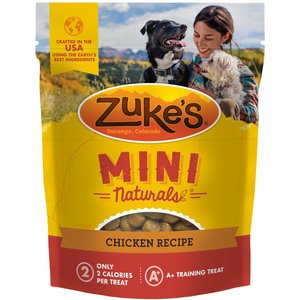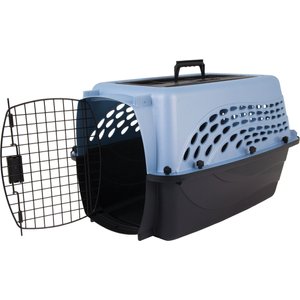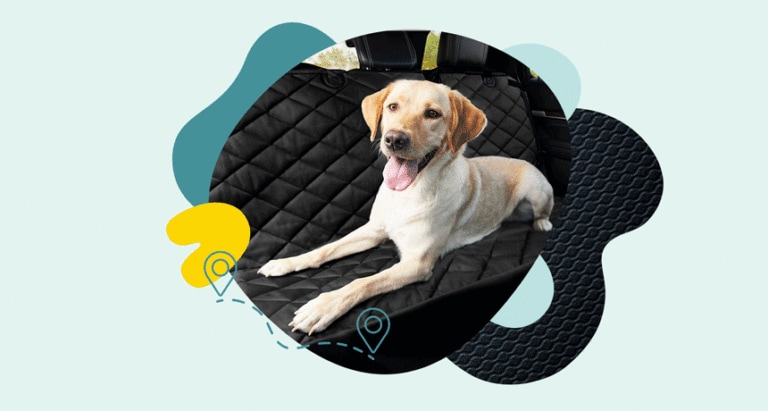If there’s one thing to make the workday go by faster, it’s having your best four-legged friend by your side. Or, in this case, on your lap.
Luckily for many employees across the nation, workplaces are becoming more pet-friendly—and with good reason. According to a study in the International Journal of Workplace Health Management, dogs at work can increase job satisfaction and reduce stress.
Before you take your dog to work, there are a few other considerations that should be taken into account. Take a look at our tips below to get your dog workplace-ready.
Are You Ready to Take Your Dog to Work?
“First, ask yourself if your dog is comfortable in new places and with new people, sights and sounds,” says Irith Bloom, certified professional trainer and director of training at TheSophisticatedDog.com. If your dog is territorial or aggressive, he probably won’t do well in an office setting. “Coworkers and customers walk in and out of workplaces on a regular basis, and if your dog gets stressed and behaves aggressively every time someone enters, neither your dog nor your coworkers and customers will be happy,” says Bloom. “Similarly, if he runs away or tries to hide when he sees new people or things, that indicates he is experiencing stress, and he’ll probably feel a lot better at home.”
How to Get Your Pup Workplace Ready
- Housetrain your dog. If your pup is not potty trained, It may be best to leave him at home. If you insist on showing off a new puppy, make sure the proper preventative measures are taken. Consider bringing along some potty pads with a built-in dog attractant. A dog pen can also help to keep your dog (and any messes!) contained.
- Get your pet microchipped. “It’s fairly easy for pets to get lost when they are traveling from one place to another,” says Bloom. Therefore, she recommends investing in a microchip. Microchipping a pet is one of the best ways to get your pet back if you lose him. Before bringing your dog to work, register and update your microchip. In addition to the microchip, Bloom advises that your pooch wear a collar with a tag with your contact information on it. “In a workplace, doors open and shut a lot, and if your dog decides to dash out the door, he could be hard to find. The tags and microchip will make it easier to track down your pet in those situations,” she says.
- Keep him confined. Even if your pup is older, a doggie play pen may be a good idea. It will keep your dog away from potential dangers, like other dogs that your pup doesn’t get along with. “Dogs can get tangled in cords, trapped behind closed doors or injured by office equipment,” says Bloom. Plus, keeping your pup contained prevents him from begging at your coworkers heels during lunch breaks, and otherwise distracting them from their work (even if it’s welcomed at your dog-friendly office!).
Packing for Your Dog’s Day at Work
Your dog will likely get hungry and thirsty if your shift is more than a few hours long. If this is the case, make sure you come prepared. Pack a bowl for water, a bowl for food and your pup’s food. Bloom recommends an interactive food dispenser, like the Kong Wobbler, that dishes out dog food or dog treats as your dog plays with the toy. This helps keep your dog entertained and stimulated during quiet days at the office, and reduces the chances of overeating.
Besides food and water, make sure to bring a towel or dog bed when you take your dog to work. It is also helpful to keep plenty of treats handy, like Zuke’s Mini Naturals Chicken Recipe Dog Treats, so you can reward your pup for being a quiet and well-behaved employee.
For your morning and evening commute, don’t forget a dog kennel. The Petmate 2-Door Kennel is a sturdy carrier with a modern design ideal for any of your pet travel needs. You can also use a seat belt tether to keep your best friend safe during the ride.
Tips to Keep in Mind When You Take Your Dog to Work
If you are just starting to take your dog to work, Bloom recommends taking him out on walks often. “With frequent walks, it will be easier for your dog to understand that he will get regular opportunities to potty, as well as where he should actually be pottying,” she says. Make sure to keep plenty of poop bags stored at your desk to clean up after your dog.
While dogs at the workplace may be a fun, it is important that your pet is happy and comfortable as well. Bloom says to monitor your pet for signs of any discomfort, stress or anxiety. “If your dog spends the entire day at your workplace showing stress signals, he’s probably not very happy there and should go home,” she says.
Some behavioral symptoms of stress and anxiety include growling, snarling, barking, lunging and biting. Some more subtle signs are repeated lip licking or yawning, excessive panting and a tucked tail. Remember, you and only you are responsible for your pet’s happiness. It is essential that your furry friend is a priority for you during your workday.

Samantha Schwab, Junior Editor
As an aspiring cat mom, Samantha Schwab can be found mining keywords, meticulously editing BeChewy blog posts or standing at her desk (usually all three!). An espresso shot and kitty cuddles are the only things that stand between Samantha and conquering the (pet) world!
Share:

















